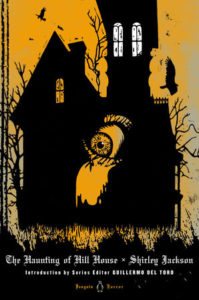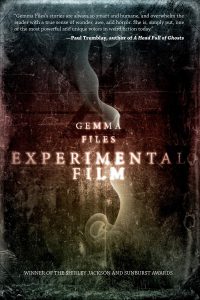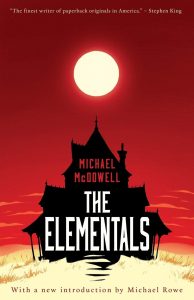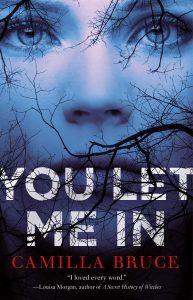I have always been drawn to the uncanny in fiction, both as a reader and a writer. The uncanny to me is the Freudian concept of strangeness within the familiar; when something you think you know takes a mysterious, or even dangerous, turn. Freud himself brought up dolls as an example of the uncanny; how they resemble people but are not, which might explain the abundance of fiction where dolls come to life or hold mysterious powers. It also brings to mind creatures from folklore who disguise themselves as human in order to lure their unsuspecting victims—or the more mundane equivalent: a murderer who hides their true colors.
Sometimes the uncanny in fiction is creepy, other times it turns surreal. Sometimes it leaves a lingering notion that something is maybe not what it seems, and just because it is fiction it allows us to bask in that thrilling (if off-putting) state for a while, before the world regains its balance. Some people hate that sort of unsettled feeling, others just love it, and I am definitely one of the latter.
Here are some books that have done the trick for me and given me a sense of the uncanny.

Picnic at Hanging Rock by Joan Lindsay
On Valentine’s Day, 1900, three students and a teacher from Appleyard College disappears on an outing to Hanging Rock. Three of them are never seen again, and the one who does come back remembers nothing at all—so what, exactly, happened? This novel is strange in the best kind of way, taking place in a sweltering Australian summer where everything is eerie and slightly off-kilter. It perfectly captures the dreamy in-between state of adolescence (and the danger that lies therein), as well as the claustrophobic environment at the boarding school, which is a world of its own, brimming with repressed emotions. This novel made me feel dizzy for days, and I just could not stop thinking about it.

Behind Her Eyes by Sarah Pinborough
It is hard to talk about this novel without giving away the startling twist. On the surface, this is a fast-paced psychological thriller set in a domestic environment. Behind Her Eyes is all about deception, though, and likely not what you think it is. The story is about Louise, a single mom who works as a secretary, who gets involved in the lives of a wealthy couple, David and Adele, who seems to lead a picture-perfect life. The more involved Louise gets, however, the stronger becomes her sense of dread, and the conviction that something is very wrong. The ending of this novel had me reeling (in a good way).

House of Leaves by Mark Z. Danielewski
This is one of those instances where the uncanny takes a sharp turn towards the bizarre. It is also the kind of book that makes you work hard for the prize. Here, even the physical novel is out to confuse you with mind-boggling inventory, mazes and riddles. What begins as the story of a family who discovers that their house changes in mysterious ways, turns into a surreal tour de force with notes of cosmic dread. I recommend this tome only to ambitious readers with an open mind and time on their hands. People who prefer their fiction with a slightly more linear narrative, better move on to the next book on the list.

The Red Tree by Caitlin R. Kiernan
Sarah Crowe, a struggling author, rents a remote house in order to battle writer’s block and work through the grief following her partner’s suicide. What she does not know when moving in is that the plot of land she is staying on also houses a large red oak that has been surrounded by rumors and folklore for centuries. This is a case of stories within stories, told through various manuscripts, but mainly Sarah’s journal. She is not the most reliable of narrators, though, and as the legacy of the oak is slowly being revealed, Sarah’s own world unravels. Toeing the line between psychological thriller and Lovecraftian horror, this makes for a deliciously unsettling read.

In the Woods by Tana French
In 1984, four children disappeared while playing in the woods. Only one of them was found, still alive but in a bad shape, and with shoes full of blood. He did not remember anything of what had happened. Twenty years later that same boy has a new name and is a detective on the Dublin Murder Squad, set to investigate the murder of a twelve-year-old girl in the very same woods where it happened. This novel is mostly a murder mystery, but laced with echoes from the past. It is not paranormal per se, but there is still a certain something there, that runs beneath the narrative in an eerie, unsettling trickle, and makes you feel as if you just visited a very haunted house.

The Haunting of Hill House by Shirley Jackson
This is my all-time favorite, and I felt weird for a week after reading it for the first time. In this novel, a group of supposedly supernaturally gifted individuals are invited to join a study at an allegedly haunted house. The haunting, real or not, is not what one would expect though. Hill House, portrayed as an entity in its own right, takes the emotionally frail protagonist, Eleanor, under its twisted wings, and seduces her with promises of home and acceptance. Soon, it becomes increasingly unclear where Eleanor ends and the house begins, or if they were even divided to begin with. Heart breaking, immersive and not sane, The Haunting of Hill House is one of a kind.

Experimental Film by Gemma Files
This novel is about Lois Cairns, a film critic in Toronto who stumbles upon the work of what she believes to be Canada’s first female filmmaker. The latter, Mrs. Whitcomb, mysteriously disappeared in 1918, leaving behind canisters of film containing scenes from the Wendish legend of Lady Midday, a deity who shines so bright that you cannot look upon her face, and who sports a pair of shears sharp enough to cut off heads. The beauty of this novel is how it combines the mundane details of Lois’ life (she has a son with autism) with the more mysterious elements. Like several of the novels on this list, it flitters on the border between psychological thriller and horror, which is my favorite kind of read.

The Elementals by Michael McDowell
The Savage and McCray families have strong ties, and spend the summer at Beldame, their shared refuge on the Alabama coast. Beldame consists of three houses, one for each family, and one that no one knows who owns. The latter is slowly being consumed by large amounts of white sand—and there is something else in there as well, something that might be deadly. The setting in this novel is wonderfully surreal, and the way the families live with this uncomfortable threat, as if it was nothing, is almost ridiculously poignant (we all know a family like that). Add to this an inquisitive (if intolerable) thirteen-year-old, family secrets and tensions, and the summer is about to get interesting.
*


















